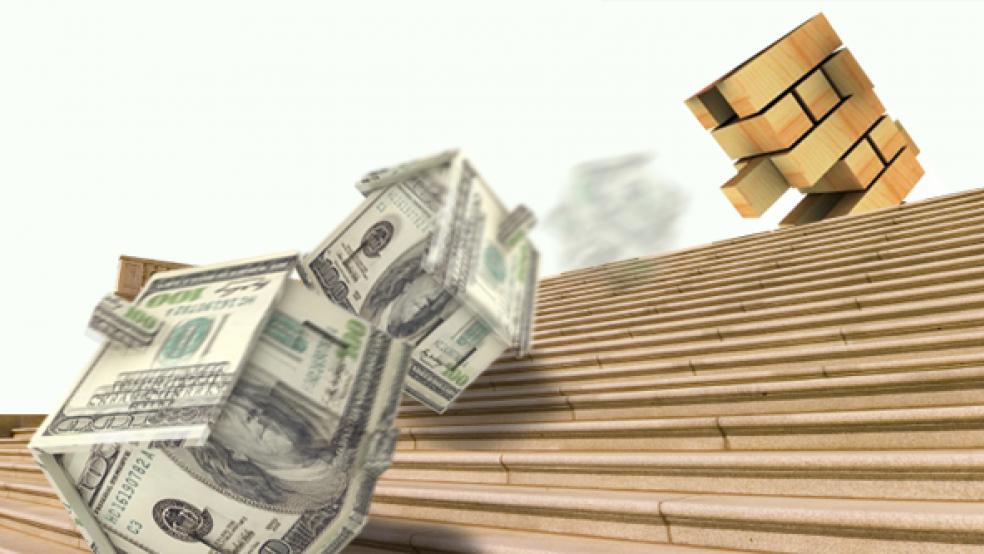A new string of grim housing data confirms what economists and analysts have long predicted: the housing market has yet to hit bottom, and once it does, it will be a long slog back to health and stability.
The nation’s heap of completed foreclosures remained steep, barely budging to 65,000 in February compared to 66,000 one year earlier, according to new data released by CoreLogic Thursday. The percentage of American homeowners more than 90 days delinquent on their mortgage payments, including those in foreclosure, rose to 7.3 percent in February compared to 7.2 percent a month earlier. However, the rate is still lower than the 7.8 percent of delinquent homeowners logged in February 2011.
According to today’s report, 3.4 million properties have gone into foreclosure since the financial crisis in September 2008. About 1.4 million, or 3.4 percent of all properties with a mortgage, were in the foreclosure process in February—a 0.2 percent drop from February 2011.
That follows new data from the S&P/Case-Shiller Index that U.S. home prices sank in January for the fifth straight month to the lowest level since 2003. Additionally, separate reports from the National Association of Realtors and CoreLogic show existing home sales and previously owned homes under contract shrank in February. The number of bank-owned homes either in the foreclosure process or seriously delinquent—the so-called shadow inventory—remained unchanged from six months earlier at 1.6 million units.
“We’ve still got millions of foreclosed homes waiting to come on the market, so we’re not going to see any dramatic rebound in house prices,” cautioned Paul Ashworth, chief economist at Capital Economics. He predicts over the next few months that home prices will slowly start to rise, which will slowly nudge homebuyers back into the market and lead banks to start loosening lending criteria. “But property is a slow-moving asset, unlike stocks or equity where things can go up or down ten percent in a day. We’re not going to get a rapid rebound after the housing bust we just went through.”
Other economists expect home prices to plunge further. “Our view is that foreclosures, excess supply, and weak demand will drive home prices as measured by the Case-Shiller indices down at least another 5 percent,” said Patrick Newport, a U.S. economist with IHS Global Insight.
Despite the apparent examples of stagnation, and even decline, some housing analysts say there are signs that better times are ahead for struggling current and potential homeowners. “The housing market is showing some signs of shaking off the depression-like conditions that have plagued it for much of the past few years,” wrote Freddie Mac chief economist Frank Nothaft in his March 2012 Economic Outlook report, referring to modest rises in seasonally-adjusted housing starts over the past 12 months.
And the latest CoreLogic report notes that 61 of the 100 U.S. regions it tracks saw their foreclosure rates fall slightly compared to a year ago. Moreover, U.S. home sales currently embroiled in the foreclosure process accounted for a growing number of U.S. home sales last year, rising to 24 percent of all homes at the end of 2011, compared to 20 percent in the third quarter. That, some experts say, signals that delinquent property sales could boost the housing market this spring. “With the spring buying season upon us, the inventory may decline further as the pace of distressed-asset sales rises along with the rest of the housing market,” said Mark Fleming, chief economist at CoreLogic.





